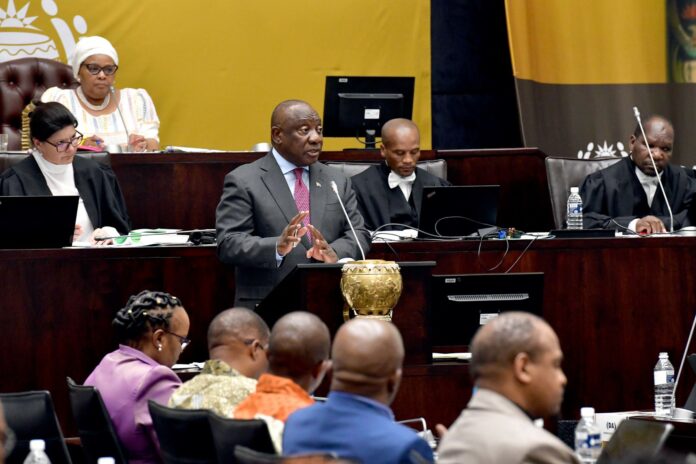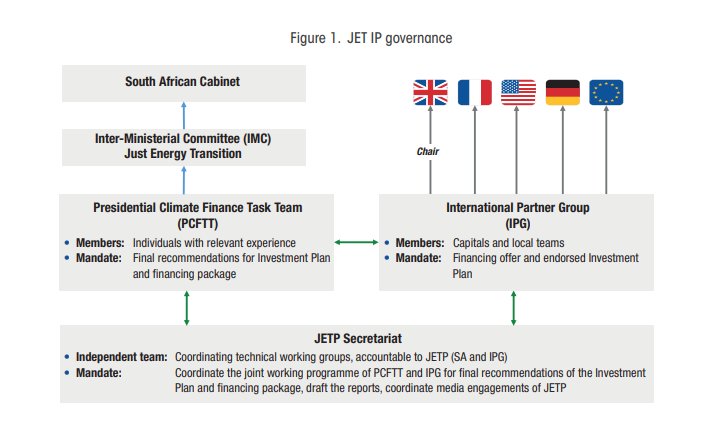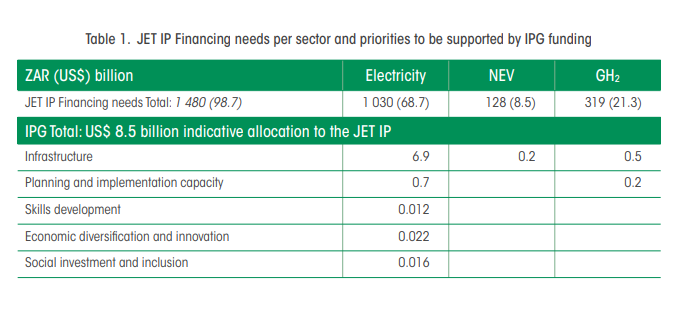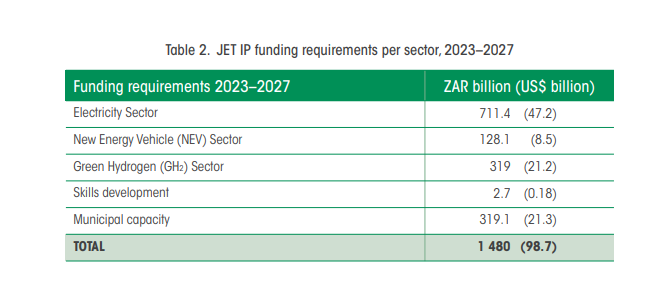
At the 2022 United Nations Climate Change Conference (Conference of the Parties of the UNFCCC/COP27) happening in Sharm-El-Sheikh, Egypt, president Cyril Ramaphosa presented South Africa’s Just Energy Transition Investment Plan (JET-IP).
READ MORE:
Why climate action needs climate finance
During COP26 in Scotland, it was announced the JETP was announced between South Africa and the International Partner Group (IPG). The IPG is made up of the United Kingdom, France, the European Union, Germany and the United States. The investment plan sets out the way the government plans to use the investments for the just transition.

The Just Energy Transition Partnership (JETP) was one of the major announcements that emerged from COP26. It is a multi-billion dollar venture that aims to facilitate a just energy transition. Overall it forms part of the broader concept of climate finance. South Africa entered into the plan with the IPG to support the phasing-out of coal. It is also about reducing the “potentially negative consequences on workers, communities and the economy”.
Just days before COP27 started, the president shared the investment plan with South Africans. Part of the plan required South Africa to produce a financing package aligned to the country’s fiscal realities and demands. The investment plan needed to uphold the development and climate finance principles and obligations that are due to developing countries. It had to be inclusive and just.
Ramaphosa presented the plan to the partners in Egypt. The plan is for the initial period of the years 2023–2027. Ramaphosa said: “It is about addressing the global risks of climate change while creating jobs and driving more rapid and inclusive economic growth.” The JET-IP was developed over the course of 2022 alongside supportive policies and processes.

A political declaration from the JETP influences the JET-IP. The political declaration states: “ “Establish an ambitious long-term partnership to support South Africa’s pathway to low emissions and climate resilient development, to accelerate the just transition and the decarbonisation of the electricity system, and to develop new economic opportunities such as green hydrogen and electric vehicles amongst other interventions to support South Africa’s shift towards a low carbon future.”
So what does the investment plan say?
The declaration envisaged that the IPG would mobilise an initial US$8.5 billion over three- to five years to support the achievement of South Africa’s low-carbon future.
The plan focuses its priority investment requirements on three main areas. Those are electricity, new energy vehicles (NEVs), and the green hydrogen (GH2) sectors. The reason why NEVs and GH2 have been focused is a deliberate strategic decision according to the report. The report said “as South Africa’s electricity sector decarbonises, there are significant gains to be made by unlocking growth in the NEV and GH2 sectors at the same time”.

Within the electricity sector, the investment plan prioritises three main things.
They are:
- to manage the decommissioning of the retiring coal generation fleet, in line with a revised Integrated Resource Plan (IRP), and in tandem with the development of renewable energy generation at scale and pace
- to timeously strengthen the transmission grid infrastructure to accommodate the shift to renewable energy
- to modernise the electricity distribution system.
What does the JETP partnership and financing all mean?
According to the investment plan report, the partnership between South Africa and the IPG is important for the initial financing which will be deployed for the investments in the JET-IP. The investment plan’s priority focus on state-owned infrastructure is to upgrade the transmission grid and the distribution networks. This is to enable them to take up the renewable energy that will be generated largely by the private sector in the coming five years.
The financing needs for the JET-IP over the next five years (2023–2027) are estimated to be
approximately ZAR1.5 trillion (US$98.7 billion) according to the plan presented by the government.
The funding will rely on a range of private, public, local, and international sources of climate financing.








